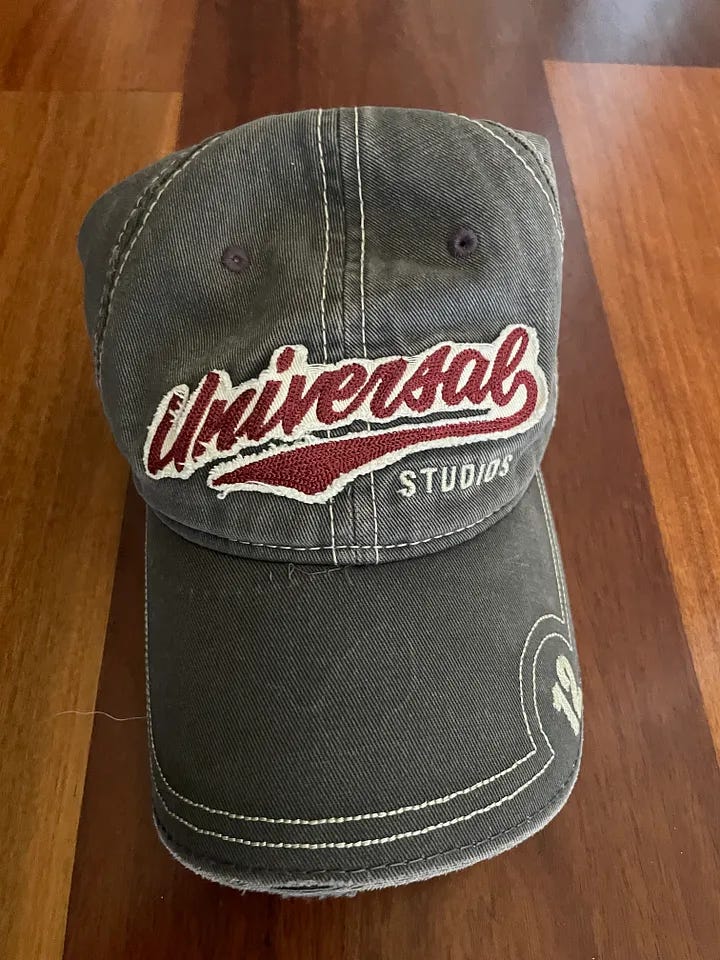My opening gambit on Substack in Feb 2024 was a ‘hot take’ on the Universities Accord final report that opened with the following line:
“Hi everybody (somebody?) (anybody?)”
My intention both then and now was to make sense of what promised to be an inflection point in higher education policy by writing about it, and doing so in a manner that amused me. Whilst hopefully informing others. I think I have succeeded.
To start the new the year I'm pleased to announce my first official sponsor, Cara-Van Gough Mobiele Universiteit.
There is of course no such thing as the Caravan Gough Mobile University. Even if sponsors were lining up for endorsement, Accessible Quality remains proudly free and independent, always.
How many universities are on the board?
I am presuming readers are familiar with the game of snakes and ladders. You roll the dice and move a few spaces. You might be lucky enough to land on the base of the ladder and climb high on the board, or unfortunate enough to land on the head of the snake and slide back to a lower position.
Counting the number of providers in higher education is much like this game. The number of universities, university colleges, and institutes of higher education has been going up and down and it is hard to keep track.
There is a long-standing bifurcation of Australian higher education between universities and ‘the rest’ formalised in ‘provider categories’. In 2019, then Minister for Education Dan Tehan released a review of provider category standards. Revised provider categories were integrated in the Higher Education Standards Framework in 2021 and now comprise:
Australian University
Institute of Higher Education
University College
In late 2023 and mid-2024 there have been developments that highlight the messy business of defining the boundaries of these categories.
How good is good to be a university college?
Late December 2023 saw the release of an Administrative Appeals Tribunal of Australia judgement on review of TEQSAs decision not to confer University College status on SAE Institute. The judgment is here and I encourage readers to look at the transcript excerpt from the applicant outlined in paragraph 67. This transcript excerpt alone runs to two and a half thousand words - and in my view is the Tribunal’s way of highlighting the strength of SAE’s argument, and knots that one can get tied up with in trying to define quality.
SAE successfully challenged the regulators assessment of the quality of its operations by exploring questions of: What is a standard?, and What constitutes a meaningful comparator?
My thoughts at the point that these case was being discussed in the sector was that without clear explicit standards that could be upheld by TEQSA there would be a queue of Institutes of Higher Education lining up at the Tribunal for their crack at University College, or Australian University status. We didn’t have to wait too long for the next Tribunal judgement to eventuate.
How much confessional scholarship does it take to be a university?
Research is a feature of the Australian university, and undertaking research at world standard is a requirement to achieve university status under the Higher Education Standards Framework.
In 2022 there were around 85,000 research journal articles published with at least one Australian university staff member as co-author (see Norton p76/and data files). It would take quite some time to read all of these articles, and more time again to engage with research outputs not caught in the Scopus net, like ACSES reports, or other non-journal-based research outputs.
One institute of higher education - the Australian College of Theology - sought Tribunal review of a TEQSA decision that it not be classified as an Australian University. Experts commissioned by the College to review research outputs of the College were provided a sample of 93 research publications constituting 30% of research outputs in a calendar year. The experts read them all. Not just that, they took it upon themselves to read the titles and places of publication of the other 200+ publications to ensure that the 30% was representative of the College’s research output.
On the basis of this analysis, including some debate about whether ‘confessional scholarship’ constituted valid research, the Tribunal ultimately found the college to be undertaking research at world standard, and therefore worthy of Australian University status. If you are scratching your head to find out what confessional scholarship is, you can find out more about this in Pro Rege.
I don’t bear any ill will to the College of Theology, nor make any hasty judgements about their claim for world standard research, nor claims for university status. The substantive point here is that by the letter of the law, and interpretation of the law, they were found to be worthy of University categorisation, even when TEQSA as the regulator of the sector argued strongly against this outcome. The Tribunal judgement was, as with the SAE judgement, not overly enamoured with testimony of TEQSAs experts, particularly when the said experts did not read all 93 publications, which effectively diminished the standing of their stated position.
The College was not immediately classified as a university, the Tribunal also referred the matter to TEQSA to consult with the relevant State Minister to satisfy requirements of the TEQSA Act. After a few months, this formality was passed and as of January 8, 2025, the Australian College of Theology was registered as an Australian University.
How many universities can you fit on North Terrace?
For the last few decades the answer has been two, but now it is one. Anyone who has strolled through the university precinct around Adelaide’s North Terrace would be perplexed at as to whether you were in the University of Adelaide, or the University of South Australia. To my mind this is a university merger that makes sense on geography alone, notwithstanding the challenges of merging systems and cultures that will play out for years to come.
From the interactions I’ve had with staff from either side of the merger I think there will be an interesting history to be told at some point. In the interim, I doff my cap to what I think has been an incredibly smooth transition involving huge volumes of work to set up a new institution effectively from scratch. This institution is now, by several measures now Australia’s largest university, and will eventually lead to a reduction in the number of universities once the pre-merger entities fall off the national register.
Current Board Standings
For the record, as of January 2025 the snakes and ladders board has:
Australian University = 44
University College = 8
Institute of Higher Education = 160
Self-accrediting institutes (with a clearer path to university or university college status) = 14
My bold correction is that by December 2025, we’ll see an increase in Australian Universities (1 or 2), an increase in University Colleges (around five), and a decrease in Institutes of Higher Education (more than five). This will result from upward drift across categories, and a net reduction in total institutes as visa caps bite, leading to closures and mergers, offset by a couple of new entrants. By December 2026 we may see the number drop as the universities of Adelaide and South Australia fall off the register with their current registrations due to expire in 2026.
A couple of final thoughts on institutional snakes and ladders.
Policy implementation timelines in higher education can be
e - l - o - n - g - a - t - e - d.
Policy consultation in 2018/2019 led to Tribunal findings in 2024, and changes in institutional categorisation in 2025, and we are just getting started on a game that appears to have many more ladders than snakes.For the Accord cynics who grumble about the lack of, or speed of progress, this is the way things are in higher ed. Maybe some policy tweaks made this year will play out over a 5 to 10 year time frame, if they stand the test of time. Things rarely play out with short term immediacy, but in my next post I’ll explore one issue that hit almost instantaneously, and grew to be the issue of the 2024 higher education policy year.
Sometimes the fetish that some (like myself) hold for principle based policies confronts the reality of policy interpretation. Vague pithy statements of policy intent might be good in theory, but sometimes you really need to be explicit and spell out what you mean in policy. The drafting of the Higher Ed Standards Framework provider categories and research quality requirements is probably too vague and too pithy, opening the door for other claims to be made that things like my scholarship, musing and photography of caravans is genuinely world class and worthy of university status.
Thanks for reading…. share and comment if this is of interest and to whet your appetite for the next post… here is a picture of some higher education caps.









More ladders than snakes at this stage.